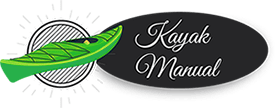Water can be as wild and untamable as a runaway horse. That’s why it is so important for anyone who dips their toes in white-capped rapids to know how to stay afloat when they get thrown out of the boat! Being prepared with proper swimming & self-rescue techniques greatly improves your chances of making it safely back to shore, along with any gear you’ve got on board – keep that nugget of wisdom handy while navigating unpredictable waterways! Get to the Surface The first step when you find yourself upside down with no hope to roll your kayak or canoe is to…
Browsing: kayak
Are you a skilled kayaker, canoeist or rafter? Don’t head out into the wild waters without having mastered throw bag technique. Throw bags have your back in those tricky swift water and whitewater rescue scenarios to pull struggling swimmers from depths of danger! Knowing how to use them effectively can mean the difference between life and death – read on for steps that’ll teach you all about this lifesaving art! Difficulty: Average Time Required: To Practice: 1/2 hour. In Real Life: Just Seconds Here’s How: Tips: What You Need
While there are many stylistic and functionally different options in kayak helmets today, the “half-cut” variety have become the most popular. It is true that “half-cut” helmets are usually more comfortable and easier to put on but they require proper adjustment, at least initially. This method will instruct the kayaker on the most efficient way to put on a half-cut whitewater kayak helmet. Difficulty: Easy Time Required: 15 seconds Here’s How: What You Need
While there are many helmet options for the paddler, “full-cut” whitewater kayak helmets offer the most protection for your head. Of course anyone can get a “full-cut” helmet on their head by merely pressing it down over the ears and pulling the strap tight but there may be some pain in the process. This method will instruct the kayaker on the most efficient way to put on a full-cut whitewater kayak helmet. Difficulty: Easy Time Required: 15 minutes Here’s How: What You Need
One of the most important articles of kayak gear a whitewater kayaker will buy is a whitewater kayaking helmet. While most kayak helmets are purchased based on price or on style, very few are bought due to their features. The first step in knowing what to look for in a kayak helmet is knowing the parts that make them up. A kayak helmet is basically constructed of three parts: Shell The outer shell is the hard part of the kayak helmet that is seen by the outside world. The shell will be the surface that comes into contact with the…
What is Olympic canoe / kayak? Even though canoeing and kayaking are centuries old activities, they weren’t introduced to the Olympics until the 1924 Games. 12 years later, in 1936, flatwater canoe / kayak racing gained full Olympic event status. In 1972, the whitewater version of canoe / kayak known as Slalom was added to the Olympics. Competition In today’s Olympics, men and women compete in 16 different Flatwater and Slalom Olympic Canoe / Kayak events: Canoe / Kayak Flatwater Races Canoe / Kayak Slalom Races Canoe / Kayak Flatwater Races Flatwater races are held on calm water across a…
It should be surprising that most canoe owners don’t know how to canoe. Unfortunately this is a fact that is evidenced by watching people fumble around in their canoes while out on the water. All too often these people only employ one type of canoe stroke and switch the side they are paddling on way too frequently. This guide will explain the skill progression needed to learn how to canoe. Difficulty: Average Time Required: A few months, maybe less, maybe more. Here’s How: Tips: What You Need
There are times while sitting stationary in a kayak where you will need to spin the kayak around in a tight circle. Spinning the kayak in place is the fastest way to turn a kayak around and the only way to do it in tight places. This how-to will direct the paddler on how to spin their kayak in place. Difficulty: Easy Time Required: 10-15 minutes of practice each time Here’s How: Tips: What You Need
While kayaking there are times when the paddler might need to adjust the direction they are facing by a drastic angle. The kayaking reverse sweep stroke is the perfect manuever to do just that. This how-to explains the proper technique to use when doing the reverse sweep stroke in a kayak. Difficulty: Average Time Required: A few minutes of practice each time. Here’s How: Tips:
I know how hard it is to find the ultimate kayak rack for your Kia Optima. You simply can’t install a run-of-the-mill kayak rack on the roof of your car. You need something special, something that will add to the grandeur of your car, right? Also, you need have a kayak rack that’s as sturdy as a rock because you don’t want to spend money on it again. But don’t worry – we’ve compiled some of the cream of the crop racks for your Kia Optima. Best 5 Kayak Racks for Kia Optima 01. Thule Hull-a-Port XTR Roof Rack N/A…
